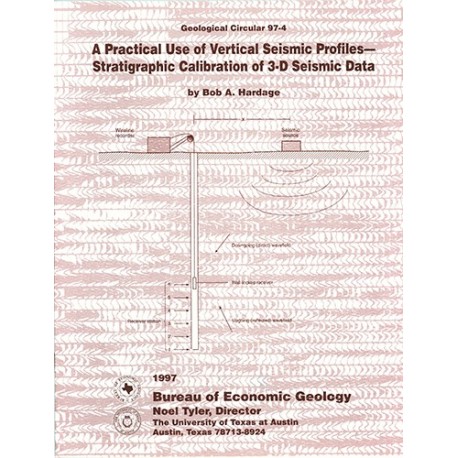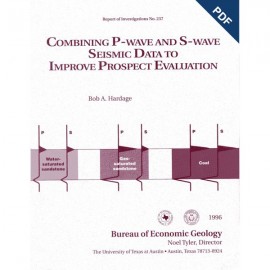Geological Circulars
-
Books & Reports
- Reports of Investigations
- Guidebooks
- Udden Series
- Geological Circulars
- Down To Earth
- Atlases of Major Oil and Gas Reservoirs
- Texas Memorial Museum Publications
- Environmental Geologic Atlas of the Texas Coastal Zone
- Mineral Resource Circulars
- Other Reports
- Seminars and Workshops
- Handbooks
- Submerged Lands of Texas
- Symposia
- Annual Reports
- Open File Reports
-
Maps & Cross Sections
- Thematic Maps
- Miscellaneous Maps, Charts & Sections
- Geologic Atlas of Texas
- STATEMAP Project Maps
- Geologic Quadrangle Maps
- Cross Sections
- Highway Geology Map
- Energy and Mineral Resource Maps
- Shoreline Change and Other Posters
- Wilcox Group, East Texas, Geological / Hydrological Folios
- Bouguer Gravity Atlas of Texas
- River Basin Regional Studies
- Featured Maps
- Posters
- Teachers & the Public
-
Geological Society Publications
- Gulf Coast Association of Geological Societies
- Alabama Geological Society
- Austin Geological Society
- Corpus Christi Geological Society
- Houston Geological Society
- Lafayette Geological Society
- Mississippi Geological Society
- New Orleans Geological Society
- South Texas Geological Society
- GCS SEPM Publications
- Historic BEG & UT Series

A Practical Use of Vertical Seismic Profiles-Stratigraphic Calibration of 3-D Seismic Data
GC9704
A Practical Use of Vertical Seismic Profiles--Stratigraphic Calibration of 3-D Seismic Data, by B. A. Hardage. 11 p., 5 figs., 1997. ISSN: 0082-3309. Print Version.
For a downloadable, digital version: GC9704D.
GC9704. A Practical Use of Vertical Seismic Profiles--Stratigraphic Calibration of 3-D Seismic Data, by B. A. Hardage. 11 p., 5 figs., 1997. ISSN: 0082-3309. Print.
To purchase this publication as a PDF download, please order GC9704D.
ABSTRACT
Seismic interpreters must have a reliable methodology that allows them to (1) correlate seismic reflection events with well-log-defined sequence boundaries and (2) specify which seismic facies windows correspond to the rock facies intervals defined by well control. The need to define where critical stratigraphic features are correctly positioned in surface-recorded seismic reflection data is becoming increasingly important now that three-dimensional (3-D) seismic data are being widely used to evaluate oil and gas properties, particularly properties that are dominated by thin-bed reservoirs. The fundamental problem that confronts 3-D seismic interpreters is as old as seismic interpretation itself and can be stated as, How do you establish a rigorous correspondence between stratigraphic depth and seismic traveltime? Or perhaps even more to the point, How do you define the seismic data window that exactly spans a targeted thin bed when the position of that thin bed is known only as a function of depth from wireline measurements?
Traditionally, seismic interpreters have used locally reliable velocity functions (usually nearby velocity check-shot data) or synthetic seismograms, or both, to answer these fundamental interpretation questions. However, vertical seismic profiling (VSP) is a more rigorous methodology that interpreters can use to calibrate subsurface stratigraphy to seismic reflection data. The objective of this circular is to illustrate how VSP data can provide invaluable support to 3-D seismic interpretation. Specifically, the objective is to show that VSP data usually allow a more reliable depth-to-time calibration than do velocity check shots or synthetic seismograms. The important thin-bed calibration that VSP data provide to 3-D interpreters must be balanced by the fact that the acquisition of VSP data imposes an additional cost on the seismic evaluation of a prospect. That incremental cost needs to be justified, on a case-by-case basis, by comparing the added geological insights and the increased interpretational accuracy that may accrue when VSP data are used in a 3-D seismic interpretation.
Keywords: seismic reflection data, stratigraphic calibration, VSP data
CONTENTS
Abstract
Introduction
Information available from VSP data, velocity check shots, and synthetic seismograms
Distinctions between 3-D seismic image time and VSP image time
Enhancing the ability to correlate reflection waveshapes in 3-D seismic and VSP images
Welding stratigraphy to the VSP image
Inserting stratigraphy into 3-D seismic data volumes
Cost considerations
Conclusions
Acknowledgments
References
Figures
1. Source-receiver geometry involved in vertical seismic profiling
2. Example of a synthetic seismogram failure as a stratigraphic calibration tool and of a VSP success
3. Fundamental stratigraphic calibration information provided by VSP data
4. Concept of VSP depth-to-time calibration
5. VSP-based calibration of thin-bed stratigraphy in 3-D seismic images
Citation
Hardage, B. A., 1997, A Practical Use of Vertical Seismic Profiles--Stratigraphic Calibration of 3-D Seismic Data: The University of Texas at Austin, Bureau of Economic Geology, Geological Circular 97-4, 11 p.

